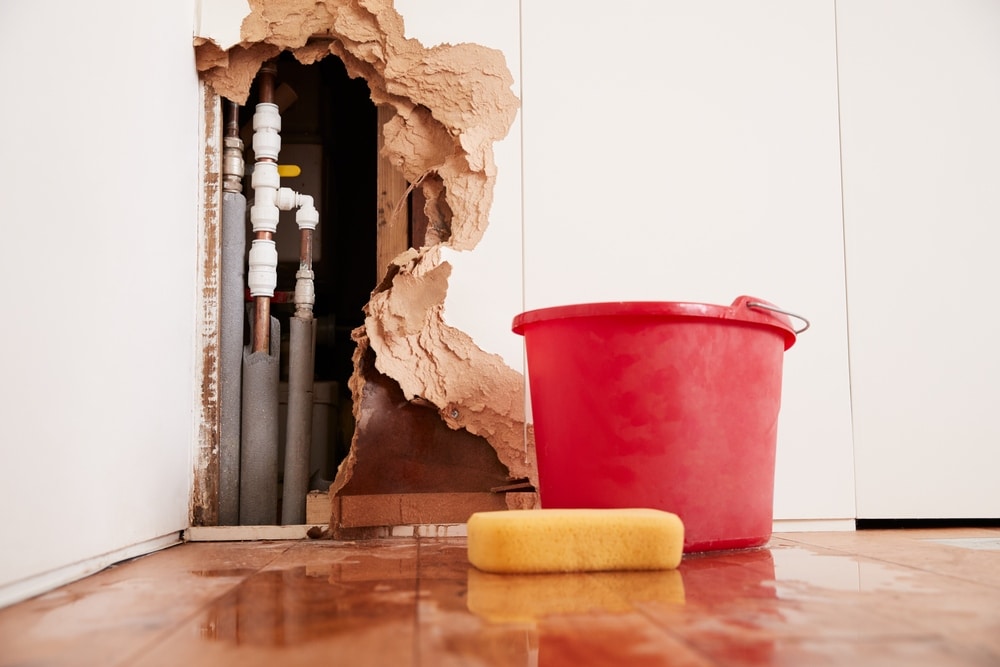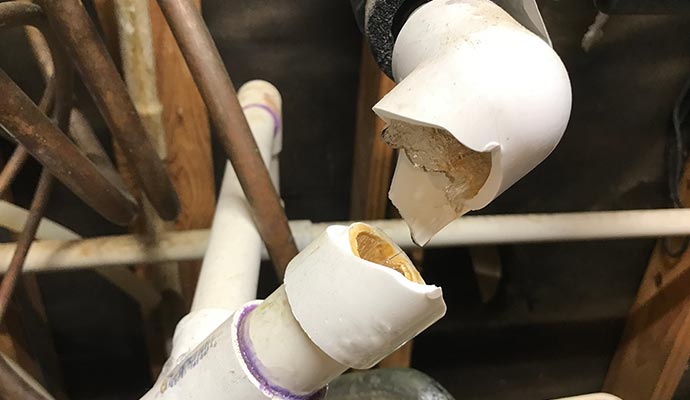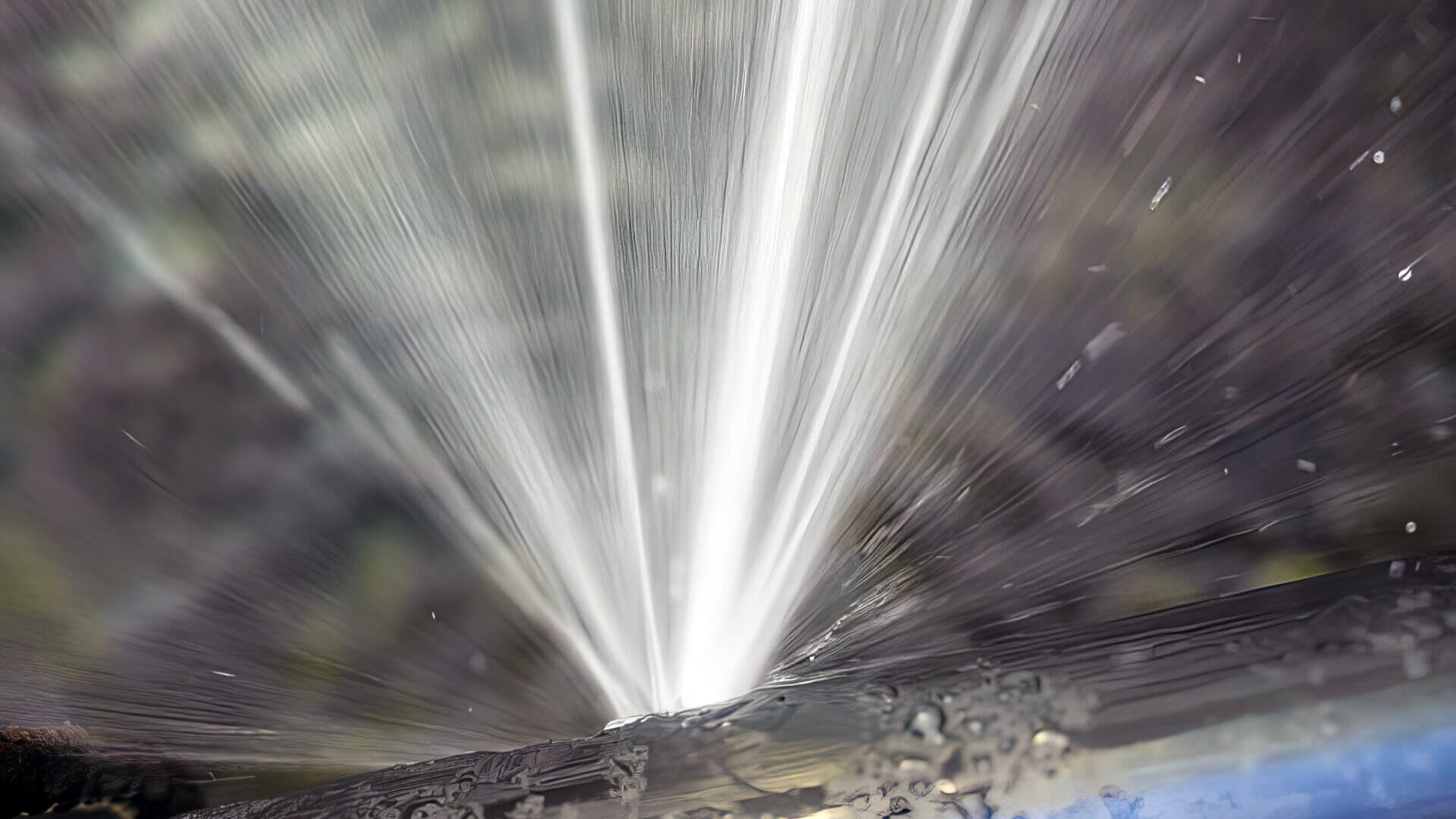Signs of a Burst Pipe: How to Identify and Address the Issue Before It Escalates
Signs of a Burst Pipe: How to Identify and Address the Issue Before It Escalates
Blog Article
Protecting Against Burst Piping: Vital Tips to Shield Your Pipes
Preventing burst pipelines is a critical issue for house owners, particularly during colder months when the risk of cold is heightened. Carrying out strategic procedures such as appropriate insulation, routine assessments, and maintaining constant indoor temperature levels can substantially reduce the chance of pipeline failing. Furthermore, comprehending emergency situation procedures furnishes homeowners to respond promptly to potential pipes issues. Nonetheless, numerous are uninformed of the certain vulnerabilities that their pipelines may face. Exploring these susceptabilities can offer vital understandings right into securing your plumbing system efficiently.
Understand Pipeline Vulnerabilities
Understanding pipeline vulnerabilities is important for efficient pipes maintenance and avoiding expensive damage. Several factors add to the sensitivity of pipelines to bursts, consisting of material make-up, age, and environmental problems. Older pipes, particularly those made from galvanized steel or polybutylene, frequently degrade with time, leading to boosted threat of ruptures and leakages.
Temperature fluctuations can also dramatically effect pipe integrity. In colder environments, water caught in pipelines can ice up, applying and broadening stress on the pipeline walls, which might inevitably lead to a ruptured. High water stress can strain pipelines, particularly at bends and joints, increasing the likelihood of failure.

Insulate Water Lines Appropriately
Appropriate insulation of pipelines is crucial for protecting against freezing and subsequent ruptureds during winter (burst pipe). Shielding your pipes system properly safeguards versus temperature level goes down that can bring about pricey damage. Begin by recognizing at risk areas where pipes are subjected to outdoor temperatures, such as basements, attics, and outside walls
Usage foam pipeline insulation sleeves or wrap insulation tape around these locations to offer a protective barrier. Ensure that all sections of the pipes, specifically those with limited heat exposure, receive appropriate insulation. Pay special attention to installations and joints, as these are more at risk to freezing.
When protecting, it's crucial to select products that fulfill local building ordinance and are appropriate for the specific setting. For instance, fiberglass insulation is often suggested for its thermal resistance properties - burst pipe. In addition, take into consideration making use of warm cords or tape in extreme problems, which can be plugged in to offer extra heat
Regularly inspect protected pipelines for any type of indications of wear or damage, as jeopardized insulation can lessen its effectiveness. By taking these proactive measures, you substantially minimize the risk of pipeline bursts, ensuring a trustworthy pipes system throughout the winter season months.
Maintain Consistent Temperature Level
A stable interior temperature is vital for protecting against ruptured pipelines during the frigid months. When temperature levels decrease, water within pipes can ice up, producing and broadening stress that may ultimately cause the pipelines to burst.Making use of a programmable thermostat can assist handle indoor temperatures efficiently, ensuring that rooms with pipes stay warm also when the home is empty.
This small flow of water can stop cold by minimizing stress within the pipes. By executing these strategies, home owners can considerably reduce the danger of pipeline ruptureds and guard their pipes systems versus the harsh winter months elements.
On A Regular Basis Inspect Pipes
Normal evaluations of pipes systems are essential for avoiding ruptured pipelines and maintaining general home honesty. During these inspections, it is essential to take a look at visible pipes for indicators of deterioration, leakages, or put on.
Additionally, examining joints and connections is essential, as these points are frequently prone to leaks. Property owners should additionally examine water pressure degrees, as extreme pressure can stress the pipes system and boost the threat of pipeline bursts.
Think about scheduling specialist plumbing evaluations at the very least yearly, particularly before winter season, to ensure your system is planned for cooler temperatures. Routine assessments not just aid in determining prompt concerns but also foster lasting maintenance methods that can enhance the life expectancy of your plumbing system. By being positive in your method, you can secure your home against the turbulent and expensive consequences of ruptured pipelines. Prioritizing pipes assessments is an investment in your home's health and wellness and safety.
Know Emergency Treatments
Comprehending emergency procedures is vital for every single home owner, particularly after conducting normal plumbing examinations. Being planned for a pipes emergency can considerably alleviate damage and save expenses. Initially, locate your major water shut-off valve; it is generally discovered near the water meter or where the main line enters your home. Acquaint yourself with its procedure, as shutting off the water supply swiftly can stop extensive flooding.
Following, keep vital tools helpful. A pipes emergency set ought to include a wrench, bettor, and towels, as well as a flashlight and a pail for small leakages. Furthermore, take into consideration having the contact info for a relied on plumbing technician conveniently available, needs to the scenario rise beyond your control.
If you discover a leakage or ruptured pipeline, instantly switch off the water supply and inform your plumber. Furthermore, record the damages with pictures for insurance coverage functions. burst pipe. Recognize the indications of check out this site prospective pipes concerns, such as uncommon water pressure changes or damp spots on wall surfaces
Eventually, proactive understanding and quick action are critical in managing plumbing emergency situations, guaranteeing your home stays safeguarded and decreasing possible damages.

Conclusion
To conclude, avoiding ruptured pipelines requires a complex approach that includes understanding pipe vulnerabilities, proper insulation, keeping constant indoor temperature levels, routine assessments, and knowledge of emergency situation procedures. By executing these essential strategies, the threat of pipes failures can be significantly lowered, thus guaranteeing the longevity and effectiveness of the pipes system. Aggressive steps not only secure against prospective damages yet also contribute to overall water conservation and the protection of property.
In cooler environments, water caught in pipelines can freeze, increasing and exerting stress on the pipeline walls, which might ultimately lead to a burst. When temperature you could try these out levels drop, water view publisher site within pipelines can freeze, producing and expanding stress that might eventually cause the pipelines to burst. By executing these methods, house owners can dramatically lower the threat of pipe bursts and safeguard their plumbing systems against the extreme winter months components.

Report this page